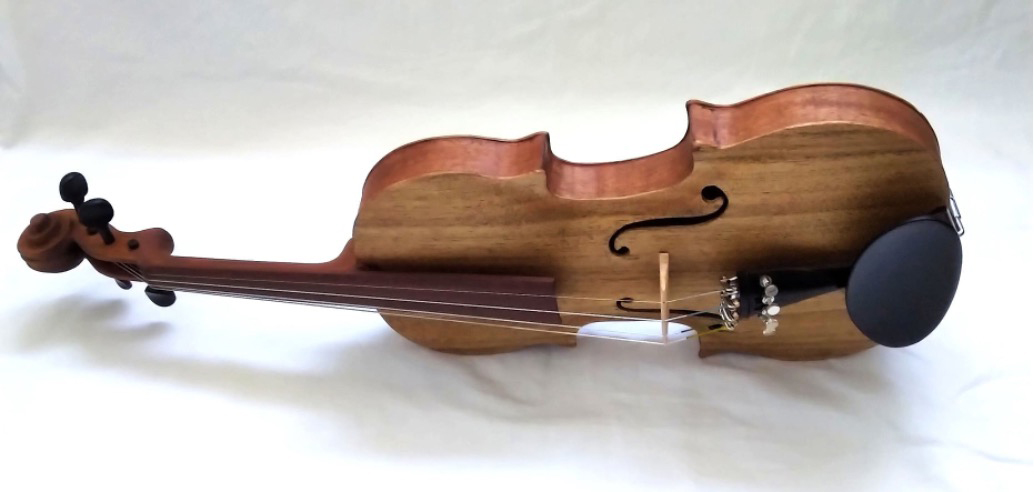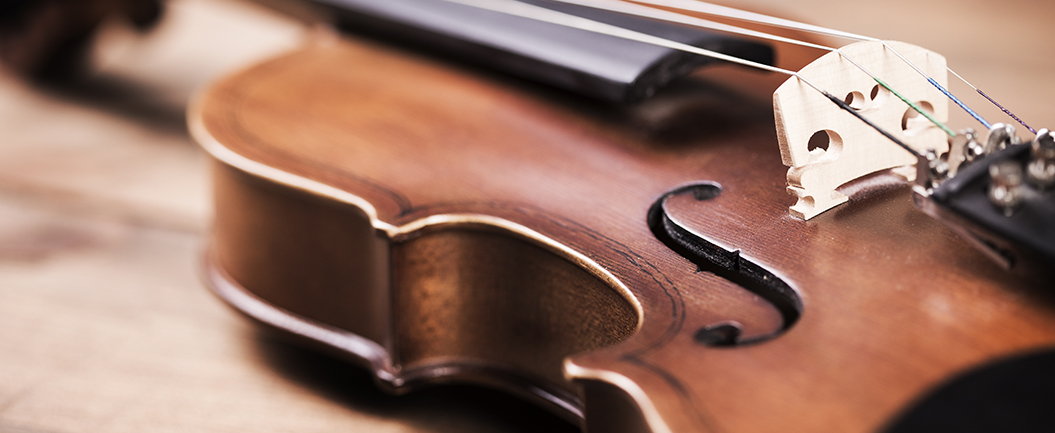Meet the African violin
Until very recently there had never been such an instrument as an African violin. There has been an African fiddle, yes, and a handful of bowed instruments, but most violins in South Africa have always been imported or made from wood of Western origin.
Today, the only African violin of its kind sits quietly in a nondescript office at Stellenbosch University, waiting for life to be played into it. It’s the only violin in the world to be made from indigenous African wood - yellowwood and sapele - and it’s unlikely that many more will be made.

Imported wood from Europe has always been the preferred material to make violins. The imported wood was easier to work with and more readily available.
The African violin is the brainchild of Professor Martina Meincken, a material scientist in the University of Stellenbosch’s Department of Forestry and Wood Science. She lectures at the university and studies material characteristics. When her daughter started learning to play the violin two years ago, it piqued Meincken’s scientific curiosity, and so she set about trying to find someone who could make a violin out of indigenous wood.
“For musical instruments, the physical properties of the wood are very important,” Professor Meincken says. “My daughter had a very cheap violin. The moment it gets worn, the pegs pop out and the tune doesn’t hold. So I thought why don’t we start making a violin out of indigenous wood, which is very uniform wood.”
It’s a difficult and painstaking process to make an African violin; yellowwood and sapele are harder woods, so more time and patience is required to make it. Furthermore, all indigenous wood species in South Africa are protected by law, so the unavailability of such wood makes it unlikely that we will see many more African violins made in the future. “It was quite difficult to get the wood in the first place. I went through a database of wood in South Africa. You don’t want a dark inner part for example. Those colour differences equate to density differences, and that’s not what you want in a violin,” Meincken says.
“Once we found the right batch of wood, we had to analyse the density, the elastic modulus, to see how strong it is, and then most importantly the speed of sound along the grain, across the grain, how it radiates sound,” she explains.
Meincken ended up with four species that were suitable. The first African violin was made by luthier Hannes Jacobs in Pretoria, who made it out of sapele and yellowwood. “I think it sounds very full; even louder, which I like. It easily fills a room by itself, and it has more emphasis on the low notes than the high ones,” Meincken says.
Meincken ended up with four species that were suitable. The first African violin was made by luthier Hannes Jacobs in Pretoria, who made it out of sapele and yellowwood. “I think it sounds very full; even louder, which I like. It easily fills a room by itself, and it has more emphasis on the low notes than the high ones,” Meincken says.
It takes around three to four months to complete a violin, and finding a luthier is not an easy thing. It’s a dwindling craft in South Africa as most violins are mass produced and imported from overseas, stifling the need for handcrafted, quality violins made by a professional luthier.
The violin, viola and cello are part of the same bowed instrument family, and were first created in early 16th century Italy. In a town called Cremona children grow up learning the art of making violas, violins and cellos in schools. It’s not called Violin City for nothing, and it’s where, in 1566, Andrea Amati designed the first violin from the viol - a Medieval fiddle.
It is in Cremona in the 1980s where Dawne Haddad, one of South Africa’s foremost luthiers, spent 13 years learning the craft. “I went to the school of violin making. All the famous instrument makers in Italy stayed in Cremona. It was the place to be if you wanted to make an instrument. It was a snap decision for me to go down this path.”
So what does it take to be a luthier?
“You’ve got to be half crazy, because making a living out of being a luthier is not easy. The competition is fierce. The Chinese are very good violin makers now, and they make violins for a lot less, so it’s almost impossible to compete,” Haddad explains. “It’s a very exacting craft. It takes skill and a lot of patience, and one is always learning, always changing.”
Haddad, whose more than 60 cellos are played all around the world, lectures at music schools and speaks at international events. Done with making cellos, she has turned her attention to violas these days as she continues to work in her quiet studio in Muizenberg, Cape Town. “I was lucky I started many years ago. I’ve established a name, and a reputation, so my instruments are sought-after. I’m fortunate in that way,” she says. “Every step of the process is important. The grain of the wood is important. I was actually surprised yellowwood was used for the neck (of the African violin), because it’s a hard wood.
What is it like to play this unique instrument that only one or two musicians have laid their hands on?
Classically trained violinist Callen Petersen, one half of popular musical duo Acoustic Element together with his cousin Jody Abel, is one of the lucky ones to have played it.
His first impression of the African violin was a positive one. “It is a beautiful, light yellowwood finish, the weight of it is comfortable. When it comes to the sound, the highlight for me is the low notes. It’s a very beautiful full-bodied sound that’s vibrant. I really connect with it a lot because I enjoy low tones in a violin,” Petersen says. “It has more of a viola sound, but with a range of a violin, which is unheard of.”
In school halls, concert halls and stadiums, the soaring, joyful sound of the violin is so intertwined in the fabric of South African music that it is difficult to imagine music without it. From classical music to urban house music, from the Soweto String Quartet, Mango Groove and the Springbok Nude Girls to Freshly Ground, the violin is as ubiquitous as the piano and drums are. The African violin now offers something unique
to an already eclectic mix - a sound that is more robust and livelier than normal violins, and one that is deeply rooted in the trees, and in the soil and soul of the African continent.

